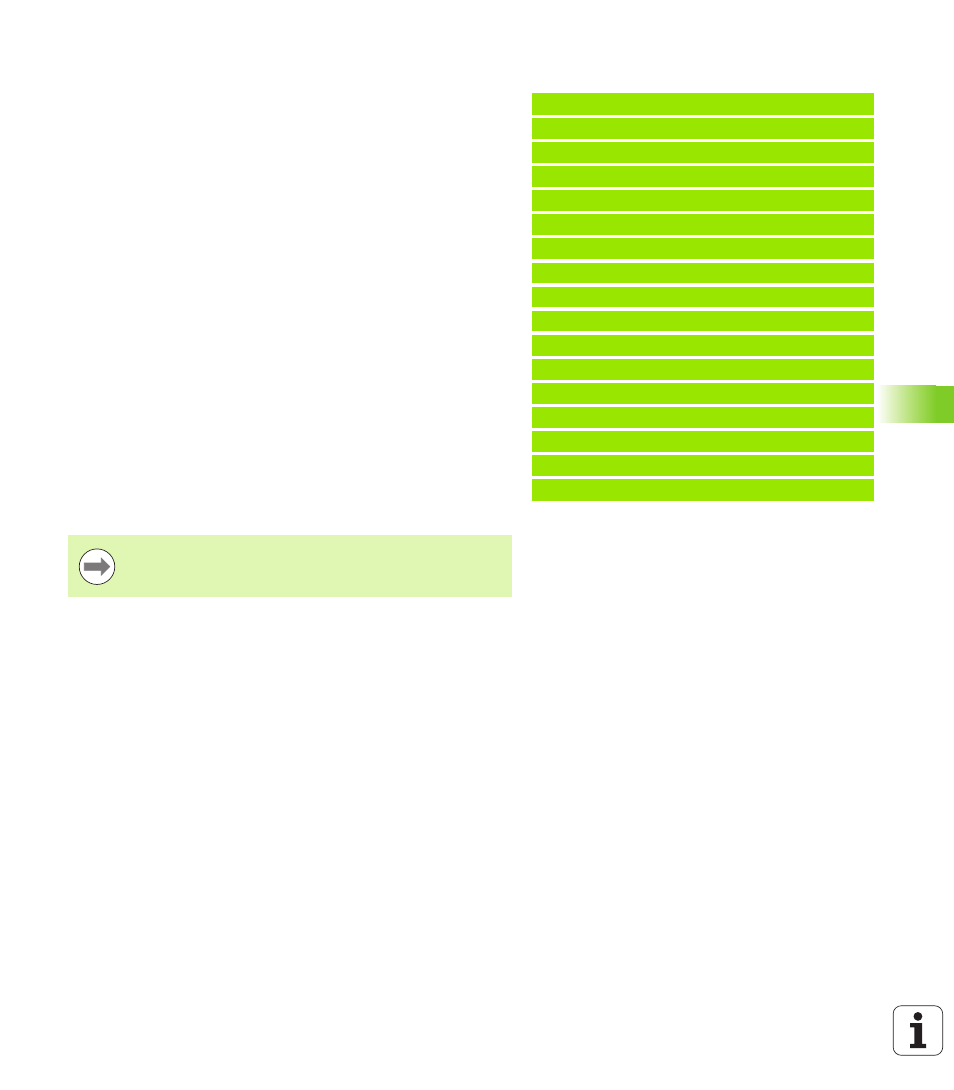1 sl cy cles with complex cont our f o rm ula – HEIDENHAIN iTNC 530 (340 49x-05) Cycle programming User Manual
Page 229

HEIDENHAIN iTNC 530
229
9.1 SL Cy
cles with Complex Cont
our F
o
rm
ula
Properties of the subcontours
By default, the TNC assumes that the contour is a pocket. Do not
program a radius compensation. In the contour formula you can
convert a pocket to an island by making it negative.
The TNC ignores feed rates F and miscellaneous functions M.
Coordinate transformations are allowed. If they are programmed
within the subcontour they are also effective in the following
subprograms, but they need not be reset after the cycle call.
Although the subprograms can contain coordinates in the spindle
axis, such coordinates are ignored.
The working plane is defined in the first coordinate block of the
subprogram. The secondary axes U,V,W are permitted.
Characteristics of the canned cycles
The TNC automatically positions the tool to the setup clearance
before a cycle.
Each level of infeed depth is milled without interruptions since the
cutter traverses around islands instead of over them.
The radius of “inside corners” can be programmed—the tool keeps
moving to prevent surface blemishes at inside corners (this applies
for the outermost pass in the Rough-out and Side Finishing cycles).
The contour is approached on a tangential arc for side finishing.
For floor finishing, the tool again approaches the workpiece on a
tangential arc (for tool axis Z, for example, the arc may be in the Z/X
plane).
The contour is machined throughout in either climb or up-cut milling.
The machining data (such as milling depth, finishing allowance and
setup clearance) are entered as CONTOUR DATA in Cycle 20.
Example: Program structure: Calculation of the
subcontours with contour formula
0 BEGIN PGM MODEL MM
1 DECLARE CONTOUR QC1 = “CIRCLE1“
2 DECLARE CONTOUR QC2 = “CIRCLE31XY“
3 DECLARE CONTOUR QC3 = “TRIANGLE“
4 DECLARE CONTOUR QC4 = “SQUARE“
5 QC10 = ( QC1 | QC3 | QC4 ) \ QC2
6 END PGM MODEL MM
0 BEGIN PGM CIRCLE1 MM
1 CC X+75 Y+50
2 LP PR+45 PA+0
3 CP IPA+360 DR+
4 END PGM CIRCLE1 MM
0 BEGIN PGM CIRCLE31XY MM
...
...
With Machine Parameter 7420 you can determine where
the tool is positioned at the end of Cycles 21 to 24.